On December 24th, 2011, the Irish Times published Dr Jerusha McCormack’s review of Sophia Hillan’s book, May, Lou & Cass: Jane Austen’s Nieces in Ireland (2011, Blackstaff Press) entitled “Tale of Austen’s spirited nieces related with verve”. Nearly seven years later, in November 2018, a spontaneous purchase I made on eBay brought to light a long-lost Victorian album, once owned by Lord George Hill of Ballyare in Donegal, containing more than 100 mid-19th-century photographs, many of which are connected to the very same Austen nieces that Hillan so articulately writes about.
After corresponding with Hillan and other Austen experts about the Hill photographs, the significance of the album from a historical perspective became even more apparent. In January 2018, the Hill album discovery made headlines internationally. Unfortunately, many of the 19th c. albumen, carte-de-visite (cdv), and cabinet card type photographs of Lord George’s friends and associates in Ireland were overlooked during all the media hoopla. Whilst the Austen-Knight connection to the Hill album is certainly remarkable and of great interest, the album’s significance to Anglo-Irish history has yet to be fully explored.”
In her 2011 review, McCormack states that Lord George, whose family seat was at Hillsborough Castle in Co Down, was “brought up in Ireland and familiar with its ways”. Lord George’s familiarity with Ireland’s ways was also manifest in his speech; he was a fluent Irish speaker as was his brother Arthur, 3rd Marquess of Downshire, who served as president of the Ulster Gaelic Society and was actively involved in the preservation of Irish literature, music and folk traditions.
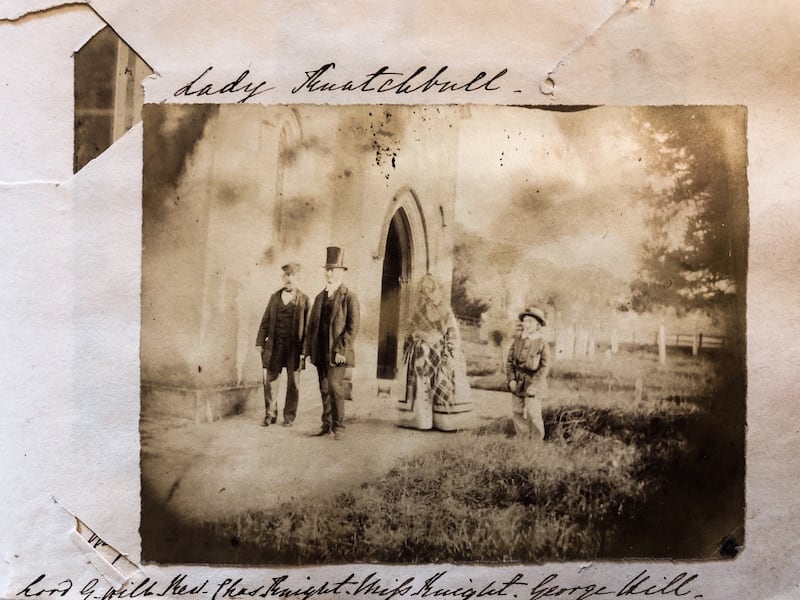
As Hillan also makes clear in May, Lou and Cass, following the death of Lord George’s mother, the Marchioness of Downshire, in 1836, Lord George Hill was left with an inheritance that enabled him to purchase about 23,00 acres of land in and around Gweedore, in the remote northwest corner of Donegal. To his credit, Lord George was not an absentee landlord and judging from his correspondences, it appears he had a genuine desire to better the lives of his tenants. Lord George’s attempts to modernise agricultural practices in Gweedore by abolishing the antiquated Rundale system and to introduce other reform measures among his tenantry were not always met with enthusiasm, and consequently he encountered a fair share of opposition from the locals.
As a businessman, Hill had tremendous acumen as well as a reputation for being ruthless. In and around Gweedore he created a monopoly; he built the Gweedore Hotel, constructed a harbour near the Clady river, built a corn store, a general merchandise store, a school and a bakery in Bunbeg. Lord George did not take kindly to competition, going so far as to have one unfortunate woman, named Margaret Sweeney, evicted for trying to open up her own bakery without permission.
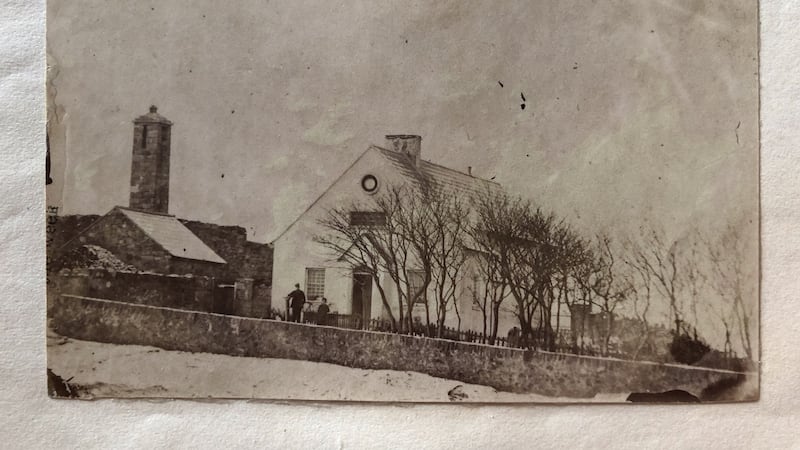
In 1857, Lord George was listed as a director of the West of Ireland Mining Company whose aim was “to develop one of the richest and most varied mineral deposits in the western and south-western districts of co. Mayo”. The company held the lease on the lands that were granted by the Marquess of Sligo to another one of Lord George Hill’s friends, Sir James Dombrain, Inspector-General of the Coast Guard and Relief Commissioner in Ireland during the Great Famine. Seamus Heaney wrote of Dombrain in his poem, For the Commander of Eliza:
And once in port I exorcised my ship
Reporting all to the Inspector General.
Sir James, I understand, urged free relief
For famine victims in the Westport Sector
And earned tart reprimand from good Whitehall.
Let natives prosper by their own exertions;
Who could not swim might go ahead and sink.
"The Coast Guard with their zeal and activity
Are too lavish" were the words, I think.
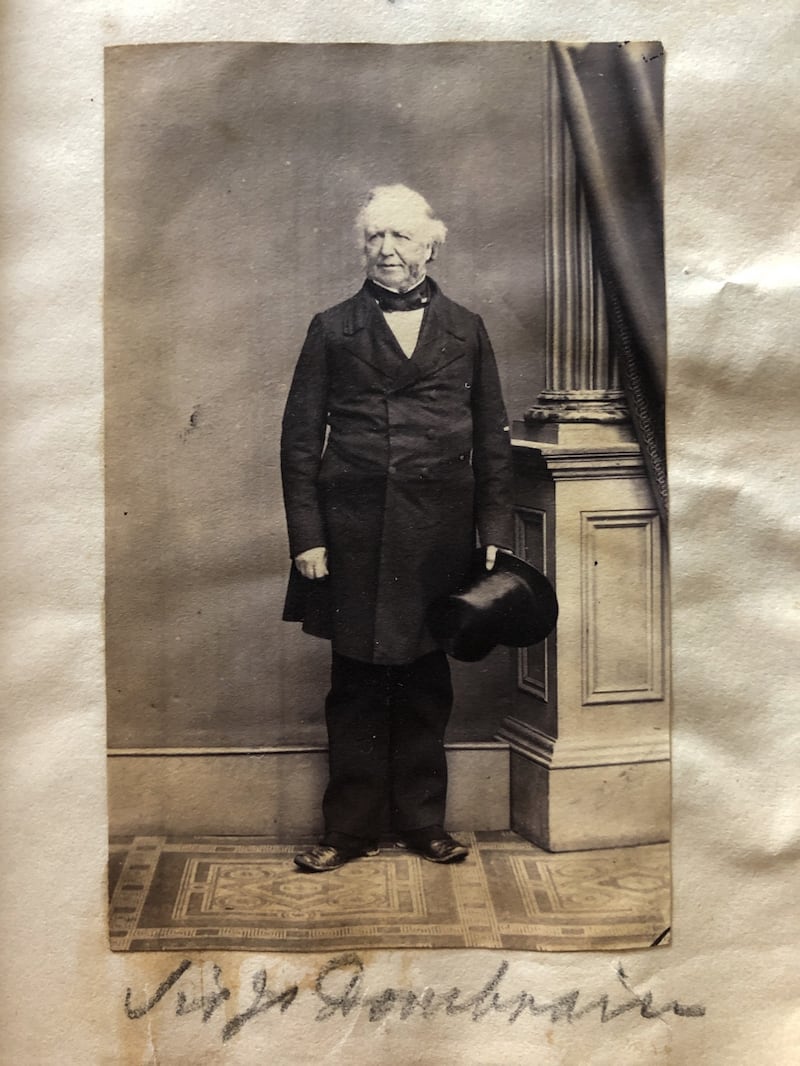
Also serving on the Board of Directors of the West Ireland Mining Company was Lord George’s neighbour, Sir James Stewart of Fortstewart; Lord George having established himself at Ballyare (Ballyarr) House in Ramelton, still extant and currently owned by the journalists, Roy and Noreen Taylor Greenslade.
During the Famine years, Lord George made concerted efforts to relieve the distress and suffering of his tenants in Donegal. Hillan writes in May, Lou & Cass: “As the famine worsened, soup kitchens were established at Stranacocragh and Dunlewey and, as Chairman of the Relief Committee in Donegal, Lord George made urgent requests for help in setting up a soup station at Bunbeg during 1846 and into 1847. Having heard from Sir James Dombrain that a ship was shortly to sail to Sligo in the west of Ireland, he set out to relieve his tenants’ immediate anxiety that they would run out of food before relief came. In September 1846, he wrote to the Relief Commission: I trouble you with these few lines to request that you will have the goodness to order a cargo with as little delay as possible to Bunbeg Store at Gweedore, as the wants of the people are daily increasing & their fears – that their provision, which is but small, will run out before a supply is sent in – are great.” (May, Lou and Cass, pp127-28).
Another person of interest involved with famine relief and featured in the Hill album is the Rev Valentine Poll Griffith, Protestant curate of the parish of Templecrone. Griffith arrived in the Rosses in 1839 and when the Famine began he led the campaign to get food and medical supplies into the Rosses area. In Patrick Campbell’s illuminating book, The Famine Years in Northwest Donegal 1845-1850 (second edition, 2015, PH Campbell, NJ), Griffith’s heroic work amongst the poor is highlighted: “He [Griffith] bombarded the government in Dublin with appeals for help almost on a daily basis, but his pleas were usually ignored, and if it were not for the help provided by a Quaker fact-finding mission in 1846, Templecrone Parish could have been decimated.” Griffith was so well respected in the parish that bereft families, too weak and too poor to give a proper Christian burial to their family members, would leave the dead bodies of their loved ones outside the Maghery rectory door.
While Valentine P Griffith and Lord George Hill were endeavoring to procure famine relief, another close friend of Hill’s, Owen Connellan, first Professor of Celtic Languages and Literature at Queen’s College Cork (now University College Cork), was in the final stages of completing his English translation of the Annals of the Four Masters.
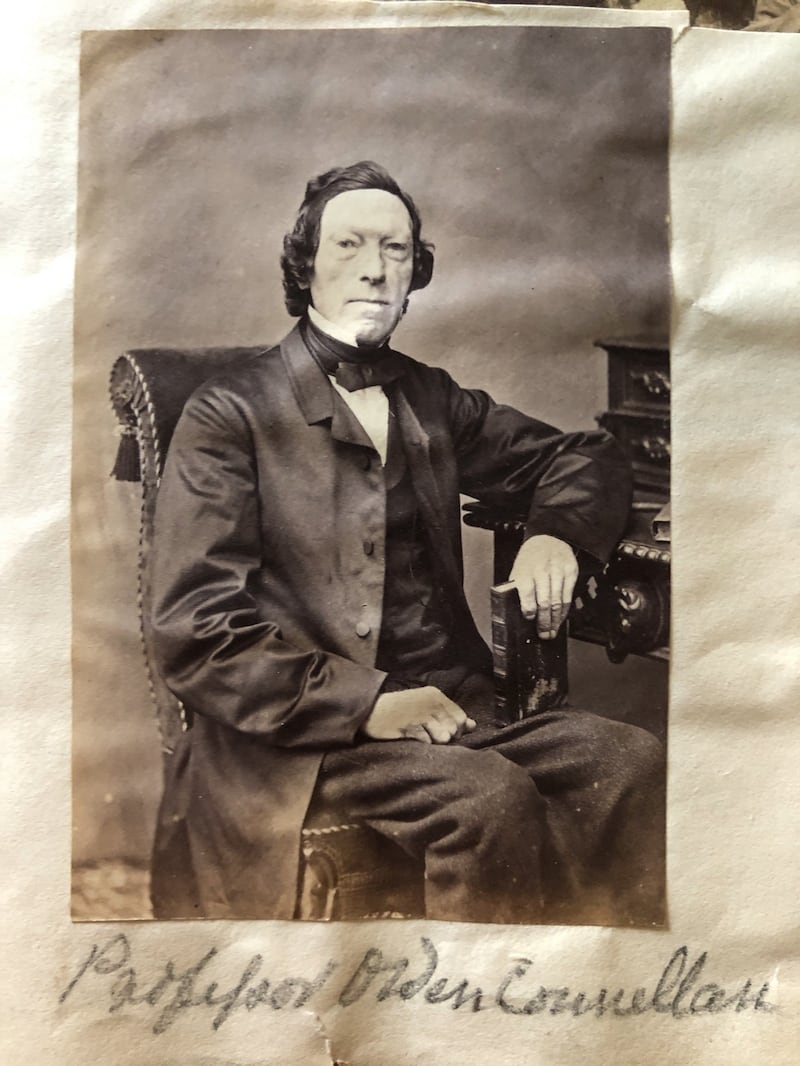
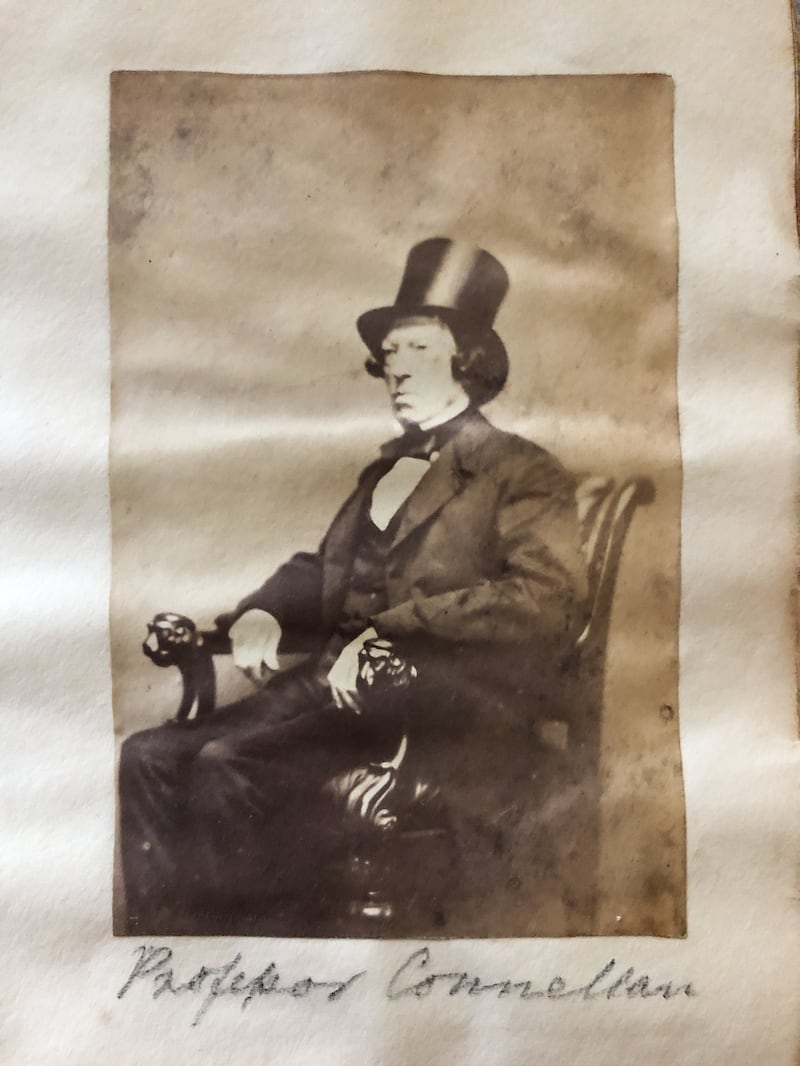
The close relationship between Lord George and Connellan is conveyed in the following dedication written by Connellan in his book “A Practical Grammer of the Irish Language” dated 1844:
To Lord George Augusta Hill, M.R.I.A.
Member of the Royal Society of Northern Antiquaries, &c., &c.
My Lord,
This Grammar I dedicate to your Lordship, as a mark of my respect for your Lordship’s acquirements as an Irish scholar, and an acknowledgment of many favours and kind patronage, which will never be effaced from the memory of, My Lord, your Lordship’s ever grateful and devoted servant, OWEN CONNELLAN.
Connellan makes additional mention of Lord George Hill in an essay he wrote for the Royal Irish Academy entitled “On the Rivers of Ireland, with Derivations of Their Names”:
“The river Clady, in the district of Gweedore, on the estate of Lord George Hill, in the County of Donegal, issues out of a chain of three lakes, four miles long, and flowing deeply by the celebrated, Gweedore Hotel, falls into the creek of Dobhar, from which the district is called Gweedore.”
The “celebrated” Gweedore Hotel, owned by Lord George and managed by Joe Cunningham, was a popular destination for 19th-century tourists in Donegal as evidenced from two surviving Gweedore Hotel visitors’ books donated to the Donegal County Archives several years ago.
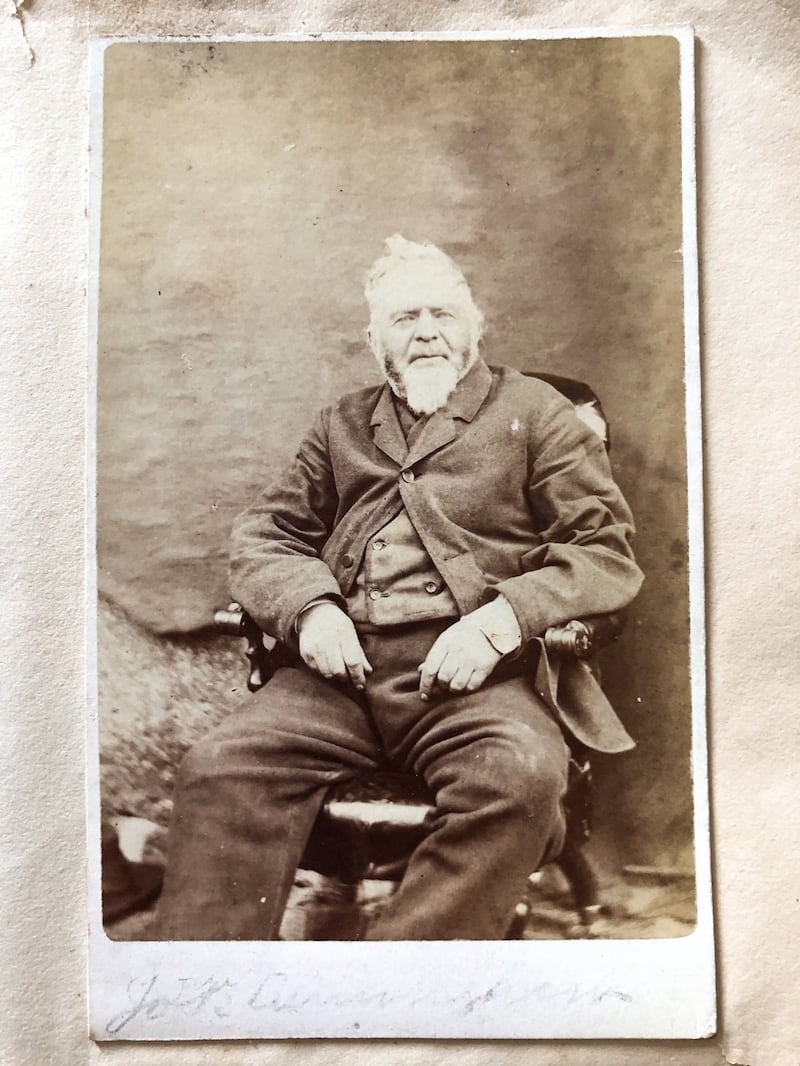
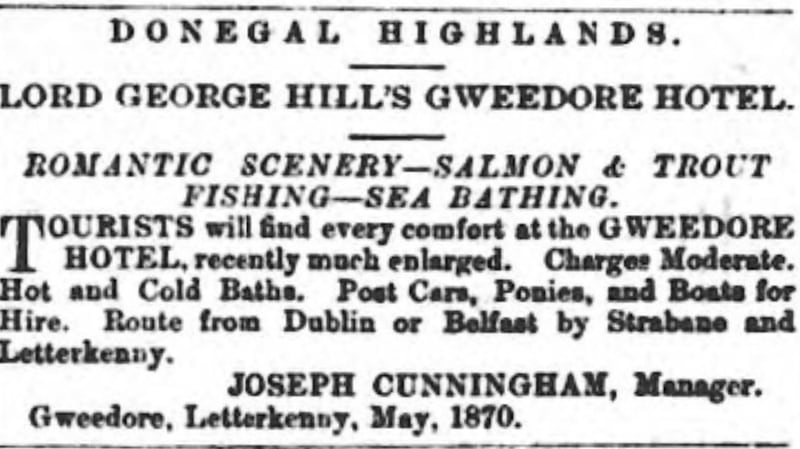
The contents of the visitors’ books have since been digitised and made available online. The visitors’ books are a historian’s delight as they contain a wide range of testimonies and commentary of the time vis-à-vis the quality of the hotel, life in Gweedore, and predictably, ample comments attesting to the fact that Lord George was an exemplary host and landlord:
24th September, 1851
“The improvements of the noble proprietor, Lord George Hill, deserve the utmost commendation…” Dr. [William Robert] Wilde, Dublin
Dr William Wilde, antiquarian, oculist and father of Oscar, was well acquainted with Lord George through their mutual involvement with the Royal Irish Academy. In the Proceedings of the RIA (April 25th, 1859), Wilde refers to Lord George’s donation of a collection of ancient bronze pins that were found upon the shore of the townland of Magheraclogher, in the district of Gweedore and in 1870, Wilde and Hill both sat on the same RIA committee.
Included in the Hill album is a photograph of Dr Wilde, in his later years, standing next to an unidentified female sitter wearing a bonnet. In November 2018, I shared an image of this photograph on social media and subsequently was contacted by one of the honorary patrons of the Oscar Wilde Society based in the UK. With my permission, the photo was forwarded to the Oscar Wilde Society committee members, who concurred that the male sitter in the Hill album is indeed Sir William Wilde. In regards to the female sitter, it was agreed upon that she is not Wilde’s wife; the Young Irelander member and Irish nationalist poet, Jane Elgee (later Lady Wilde) who wrote under the nom de plume, Speranza.
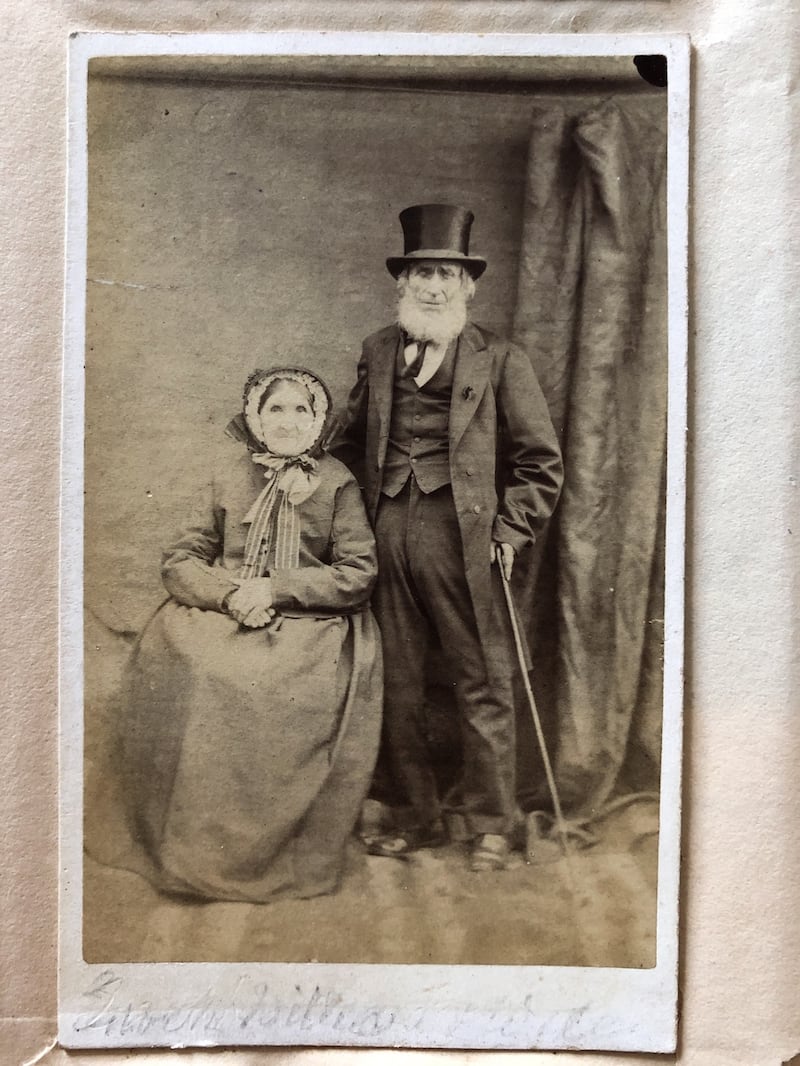
As often times happens in research, one discovery can lead to another and so it was for me when in June 2018, I purchased two unusual carte-de-visite photos, both bearing the name of Geary Brothers Artist Photographers, Patrick Street, Kilkenny (Geary Bros. also operated a studio in Dublin), from an eBay seller in the United States.
The first Geary Brothers cdv is of a woman whose face bears a striking resemblance to the well-known portrait of Lady Wilde exhibited by the Royal Irish Academy in 1864 (the same year that William Wilde received his knighthood) and painted by Sligo native, Bernard Mulrenin, who started out his career with the Ordnance Survey and subsequently ended up in Dublin where he became a well-known miniature portrait artist. Upon Mulrenin’s death, The Nation newspaper (March 28th, 1868), paid tribute to him: “All the celebrities of the day in fashion or literature sat to him for their portraits…amongst others he was proud to remember that Lady Morgan, then in the zenith of her glory, had been one of his earliest patrons, and afterwards made mention of him in her ‘Salvatore Rosa’ as one of the most gifted of the young artists in Ireland.” In 1846, Mulrenin painted William Wilde and then in 1863, Lady Wilde, at which point in time she would have been close to 42 years of age.
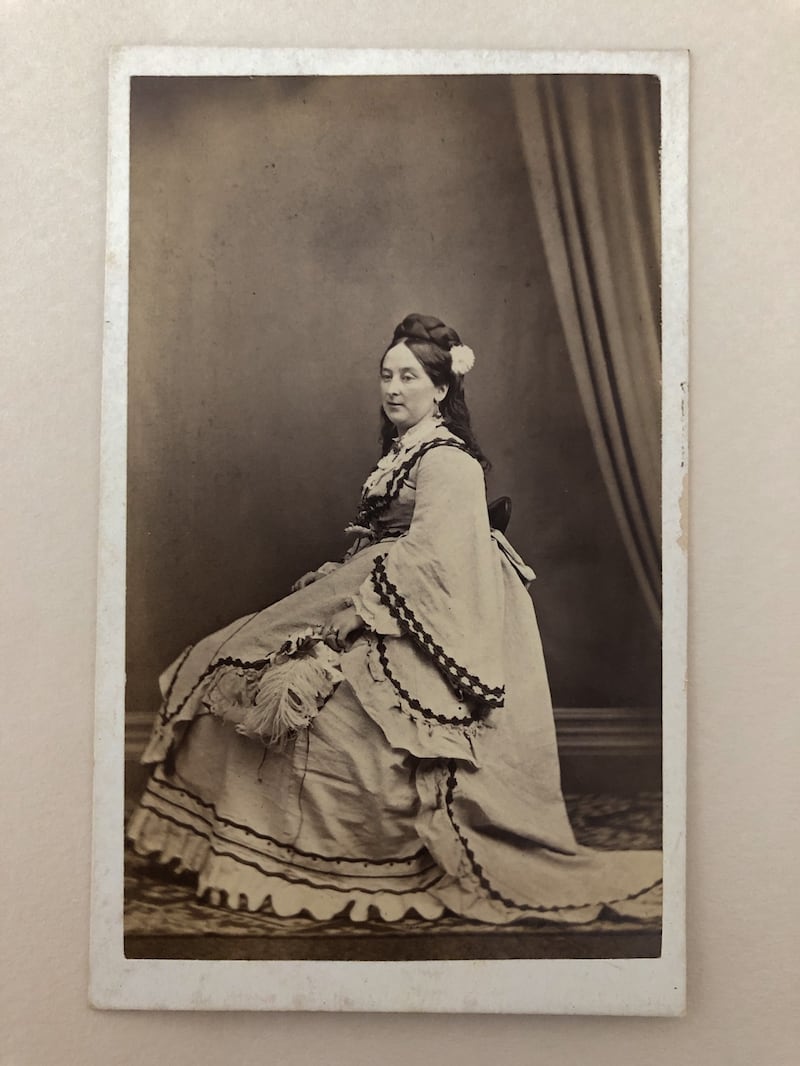
Mulrenin appears to have had a close rapport with Lady Wilde as demonstrated by the fact that he went on the stand to give testimony on her behalf during the infamous Travers vs. Wilde trial that began in December 1864 in Dublin.
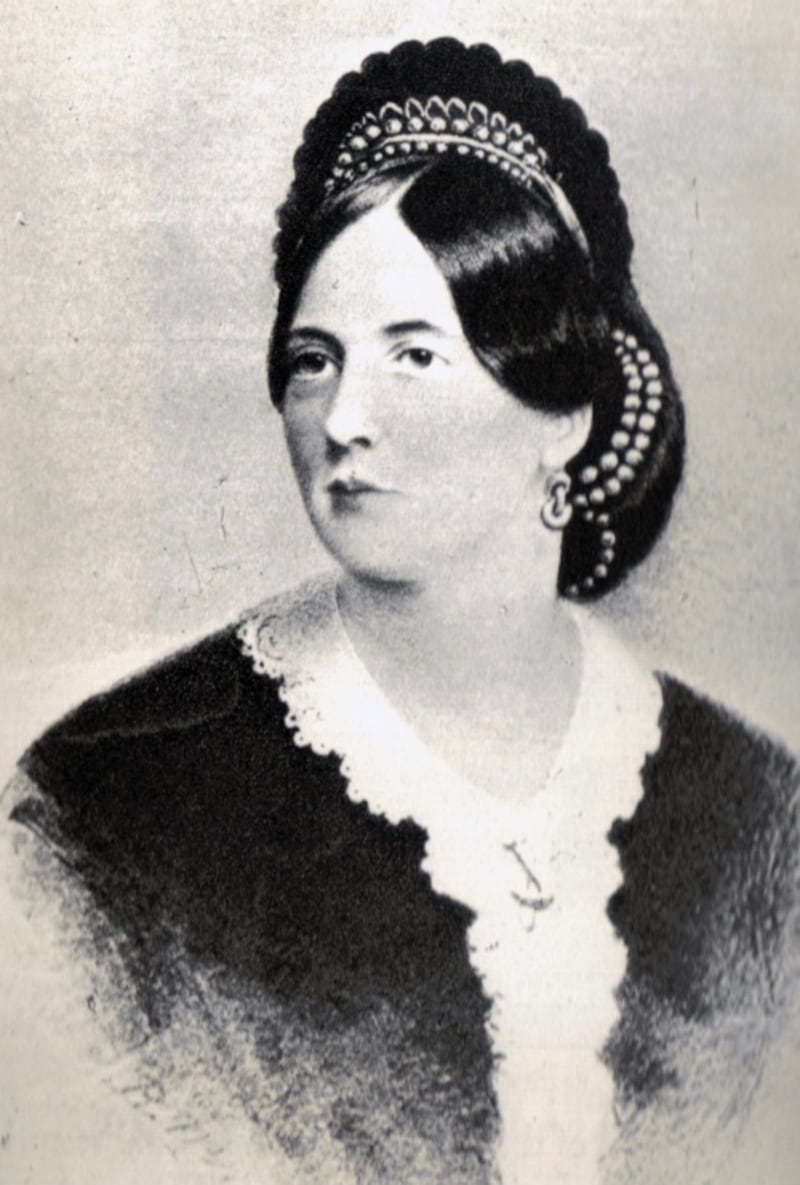
While the attire of the woman in the cdv is characteristic of 1860s fashion, her hairstyle is decidedly not. According to the Victoria & Albert Museum website: Women’s hair in the 1860s was “worn with a centre parting tied into low chignons at the nape of the neck, with loops or ringlets covering the ears”. In the Geary Brothers cdv, the lady’s dark hair is worn long with a braided “headdress” on top and alongside she is wearing a flower type ornament in her hair. A closer inspection of the cdv reveals that the mystery woman is wearing long, dangling earrings, several rings on her left hand, a lace fichu and a brooch. Adjacent to the pomegranate flower ornament in her midsection, there is a cross attached to a chain. Lady Wilde was well known for her unconventional fashion sense and when considering the middle-aged woman in the cdv, one is reminded of that “je ne sais quois” that Lady Wilde possessed.
In Emer O’Sullivan’s book, The Fall of the House of Wilde: Oscar Wilde and His Family (Bloomsbury), she writes, “Jane was unlike Victorian Englishwomen. Where many dressed in sombre and sensible colours, Jane wore white and other bright-coloured dresses, oriental shaws, flowers and Celtic ornaments…Those like, Violet Hunt, who came to see the ‘mother of Oscar’, faulted her for not being ‘à la mode’. Hunt described Jane ‘in an old white ball dress, in which she must have graced the soirees of Dublin a great many years ago’. Katherine Tynan, probably commenting on the same white dress, thought she looked like a ‘Druid priestess’, with her hair hanging down her back; a throwback to the dawn of the Celtic era. The tresses of loose hair bespoke the same freedom of spirit that had made her speak out in 1848, and were probably seen as indecorous for those used to Victorian heads covered in bonnets and festooned with ringlets.”
A study of the second Geary Brothers cdv reveals a little girl around seven or eight years old whose face seems to radiate happiness. Her light-coloured hair is held back with a ribbon and her dress is typical of children’s fashions in the mid 1860s. Upon closer examination, you can see that she is standing on the same rug (notice the pattern), and the curtained studio background behind her is identical to the one that appears in the first Geary Brothers photo mentioned previously.
Curious as to the background of the two Geary Brothers photographs described above, I contacted the eBay seller with my query and he kindly informed me that both cdv cards were purchased by him from a seller in New York City; in other words, the cdv cards were kept together as a set. Eager to know more about Geary Brothers photography studio, I contacted the National Library of Ireland, in order to find out if they had any Geary Brothers photographs in their archives. The answer received was somewhat ambiguous as the NLI collection consists of some 5.2 million photos of which only c. 55,000 are currently catalogued.
All of these “clues” on my investigative trail have led me to the following suppositions: Could the middle-aged woman in the first Geary Brothers photograph be Lady Wilde/Speranza and the little girl in the second Geary Brothers photograph be Isola, the Wildes’ beloved youngest child?
Oscar Wilde once described his younger sister Isola as being “like a golden ray of sunshine dancing about our home”. After a bout with fever, the young Isola was sent to Sir William Wilde’s sister, Emily Noble, in Edgeworthstown, Co Longford, in order to convalesce in the fresh, country air. Tragically, things took a turn for the worse, and Isola died “of a sudden effusion on the brain” on February 23rd, 1867, a few months before her tenth birthday.
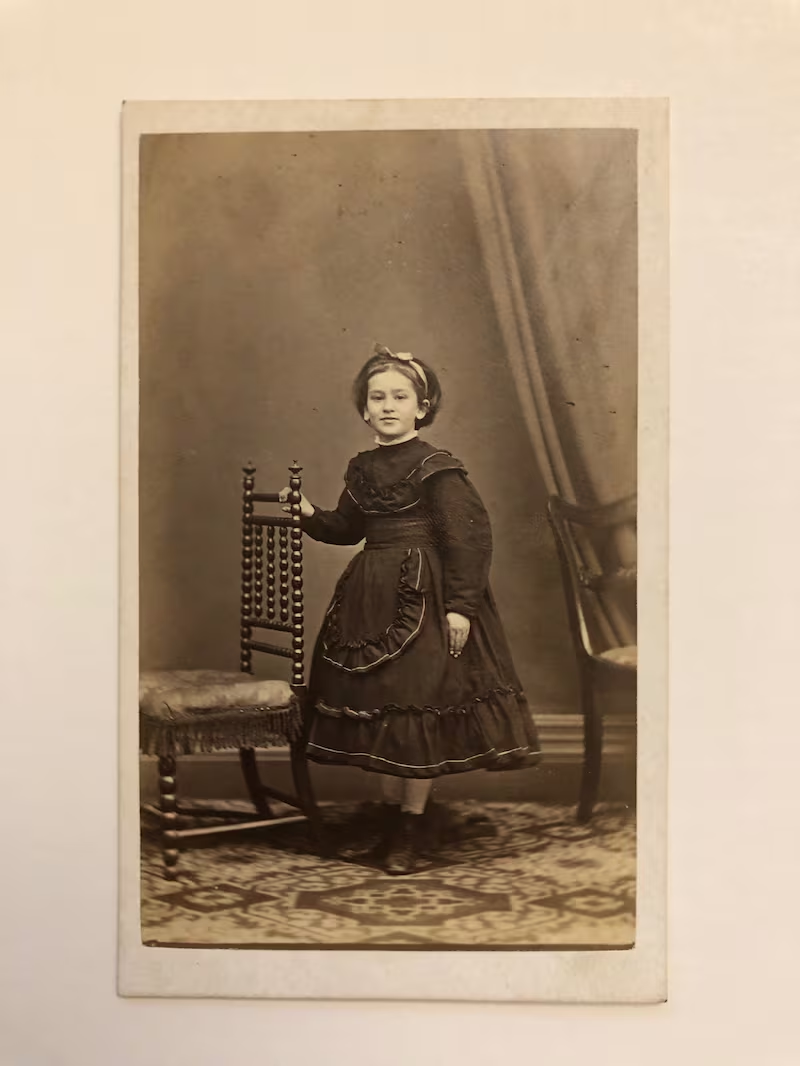
In his book, Victorian Doctor: Being the Life of Sir William Wilde (LB Fischer, NY, 1946), TG Wilson writes that Isola’s loss was felt keenly by Oscar, who was then, according to the doctor in attendance, a gentle, retiring, dreamy boy “whose lonely and inconsolable grief found its outward expression in long and frequent visits to his sister’s grave in the village cemetery”. Fourteen years later he poured out his grief and sorrow over Isola’s death in his poem, Requiescat, published in 1881:
TREAD lightly, she is near
Under the snow,
Speak gently, she can hear
The daisies grow.
All her bright golden hair
Tarnished with rust,
She that was young and fair
Fallen to dust.
Lily-like, white as snow,
She hardly knew
She was a woman, so
Sweetly she grew.
Coffin-board, heavy stone,
Lie on her breast,
I vex my heart alone
She is at rest.
Peace, Peace, she cannot hear
Lyre or sonnet,
All my life's buried here,
Heap earth upon it.
AVIGNON.
Amongst Wildeans it is a widely known fact that after Oscar Wilde died at the Hotel d’Alsace in Paris in November, 1900, an envelope was found amongst his possessions with “My Isola’s hair” written on it. The discovery of the mourning relic is yet another poignant indicator of Oscar’s enduring love for Isola.
Shortly after the purchase of the two Geary Brothers cdv photographs discussed in much length above, I unexpectedly came across another extraordinary 19th century cdv for €4.95 on eBay (what chance did I stand against kismet?); this particular one from a seller in the UK. The cdv originates from Wilhelm Schroeder studio on Grafton Street, Dublin; in what would have been very close proximity to the Wilde family’s residence at No 1 Merrion Square.
The photograph reveals an extremely tall, thin, and fashionable young man in striped trousers standing next to a chair. He appears to me to be about 16 or 17 years of age. With his gloved left hand he strikes a pose. In his right hand, he grasps the second glove, a wide brimmed hat, and an umbrella. In Victorian Doctor, TG Wilson writes: “On entering Trinity he was only sixteen years of age, still overgrown and awkward. He developed rapidly, and soon became known as a brilliant classical scholar.”
Without further ado and based on my comparison to the existing photographs I have come across in my research, I am firmly convinced that the Wilhem Schroeder studio cdv is actually a long-lost photograph of Oscar Fingal O’Flahertie Wills Wilde in his teenage years, and as such, most likely taken around the time he left Portora to begin his studies at TCD in 1871.
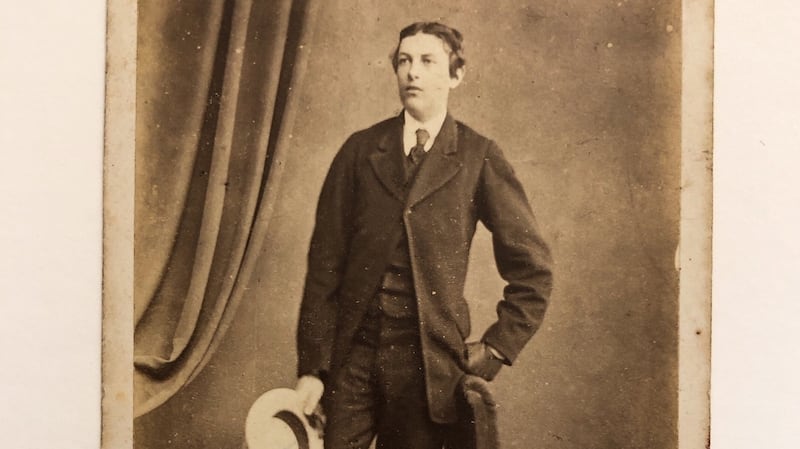
Upon initial glance, what struck me the most about this photograph is Oscar’s inscrutable countenance. He appears to be at a crossroads in life. As he prepares to embark on the academic path that would ultimately propel him to a place of literary prominence shared by few and a widespread popularity that only increases over time, could Oscar be pondering what the future holds in store for him? Perhaps the answer lies in his own words:
“Yes: I am a dreamer. For a dreamer is one who can only find his way by moonlight, and his punishment is that he sees the dawn before the rest of the world.”

















